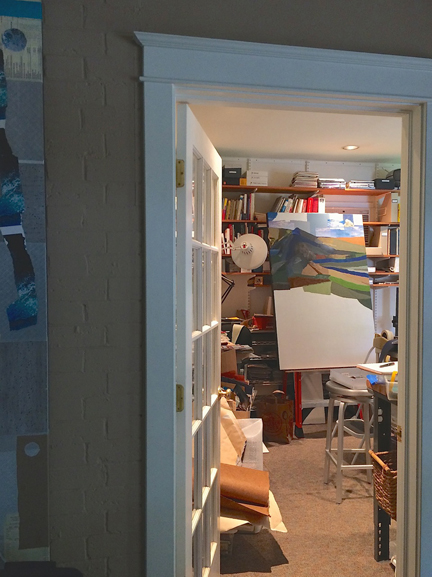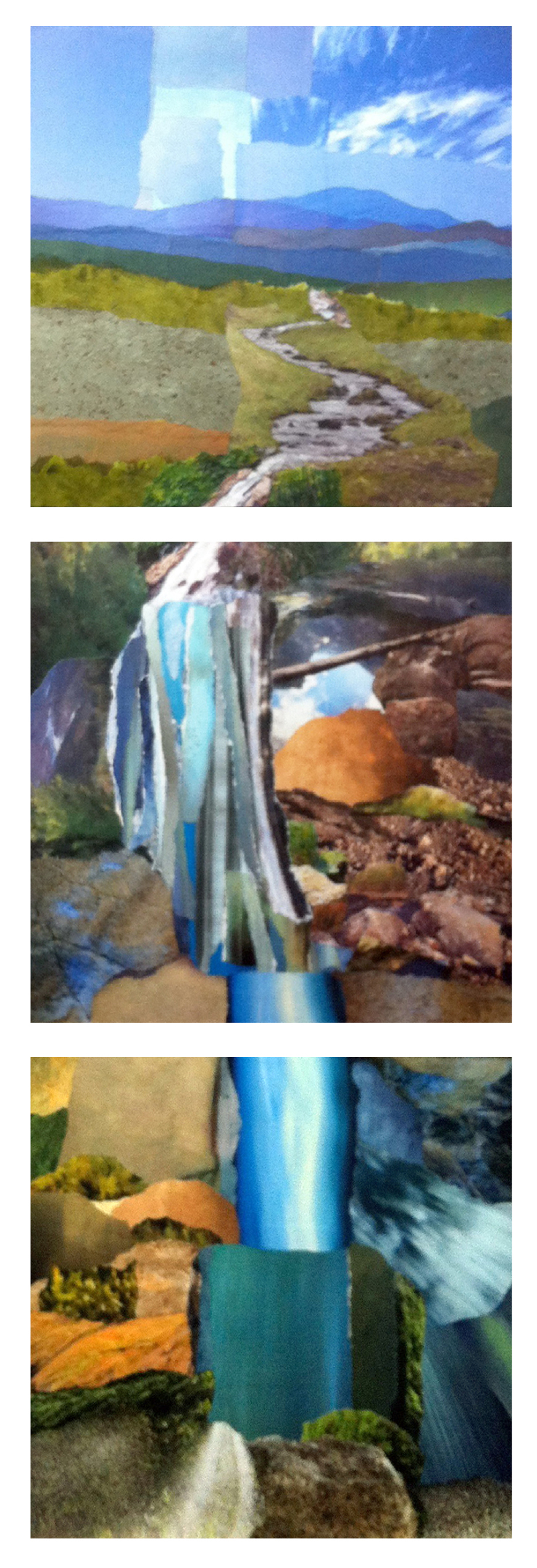You’ve probably noticed that the papers used in my collages are torn, instead of cut out. Any straight lines in my work are the included edge of a piece of paper or a graphic element within the image I've selected. Because I work most often with non-identifiable, somewhat nebulous, imagery (color, textures, blurred backgrounds), cropping those elements to produce a rough edge usually seems more appropriate to me.
Tearing has become a creative gesture akin to drawing. The process creates the lines that define areas in the collages. Over time I’ve even taught myself how to rip pretty decent circles out of paper — and it’s actually become a kind of meditative moment.
An example of directional tearing.
My work process is not as random as it might seem at first glance. Every aspect is intentional. I try to use the torn edges to my advantage. If you rip a magazine photo, you typically end up with a white edge on one side of the tear. On the other side, the ink usually extends to the paper's edge. I often use “directional tearing” to create a white edge as a highlight or a bridge to another element. If I want the edges to blend in to a compositions, I will make the tear in the other direction.
I love the feathery character of the paper fibers that are exposed when tearing. The torn edges help to meld and blend adjacent paper fragments together. I have the impression that those little fiber fingers around the edges help keep papers adhered better (maybe?)!
I love the portability of collage! This one includes some torn circles and other elements culled from a magazine while in flight.
Tearing allows me to crop the paper elements that I want to use in the same way that scissors would, but the result has a softer, more organic feel. I also can gather materials while traveling, and in almost any situation, with ease — and no worries about what scissors are acceptable to carry through security to board an airplane. (I have to admit that I miss the pre-pandemic airline magazines from which I would harvest ingredients for collage projects, while my bemused fellow passengers looked on!)
I adore oh-so-many collage works that incorporate cut elements, yet somehow the ripped edges resonate most with me for my own work.
Caveat: In occasional situations (such as my ThroughLines series), I rip papers against the edge of a ruler as a compromise to achieve a roughly straight edge. I’ve cut a few images in the case of a specific commission where it was appropriate. And somewhere out in the ether are a few early collages with straight edges — made before I discovered the aptness of a rip/tear approach!







